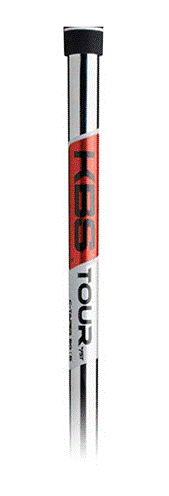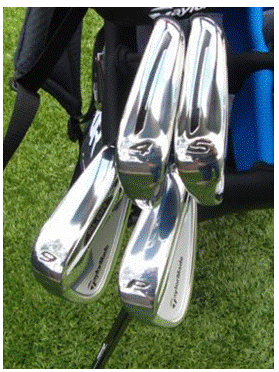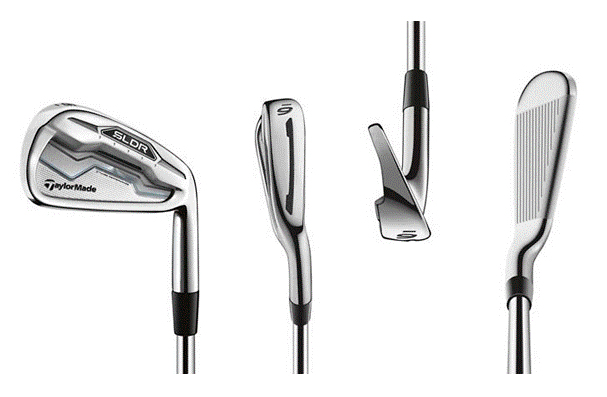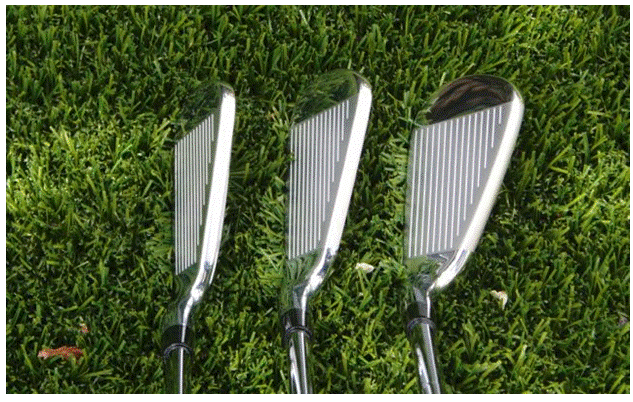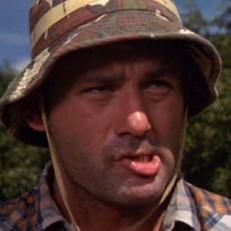Blogs
Our community blogs
-

- 4
entries - 66
comments - 8711
views
Recent Entries
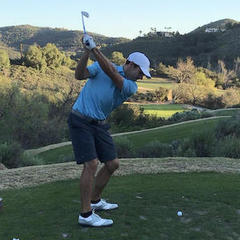 Latest Entry
Latest Entry
Possible Swing Changes for Tiger in his 40's
Posted this on IG yesterday, just something I thought would be interesting to throw out there. I could be completely off but when you look at players that have had long, relatively injury-free careers they tend to have more "freedom" with their lower body (Phil, Jack, Sam Snead, Vijay). By freedom I mean allowing the hips to turn, trail knee losing some flex and the lead knee moving inward. I've also felt Tiger's swing, especially in recent years, is too restrictive and hurts his downswing sequencing.
Someone commented that it wasn't a good comparison because the swing of Tiger's isn't a driver swing, it actually is but I'll also share this driver swing from last year in Phoenix.
Here are some of the comments and my responses:
- 4
-

- 3
entries - 28
comments - 5213
views
Recent Entries
 Latest Entry
Latest Entry
Nothing to play for
There have been 2 or 3 threads lately of guys that are getting burnt out on golf, or don't know why they are still playing.
I cant say I am at that point, as I still average over 120 rounds a year. I guess with my hype of getting ready for the US Mid Am and my Club Championship this year, I've been so focused on the goal. Well, now that those have past, I am simply playing to play. Have some fun. You never know what "winter" will be like in Arkansas. Last year we had 1 day where there was a very light snow that melted the next day, so golf improvements over the winter were pretty possible. The year before last we had 4 or 5 days were the area shut down since there are no snow plows to clear the 4-5 inches we got. It was damn cold for a long time.
Ill continue to keep up with evlovr monthly hoping to come out in the spring ready to fire some great scores. The good news is, the best time of year is starting. Cooler temps & thinner rough are fast approaching. No more helping people search for balls in the rough on every hole, and literally grip it and rip it without much worry of missing the fairway. Fall golf is great. Setting my sights on 2017 and overall improvement. Very proud of the 2016 season, but ready to turn the page on this chapter in golf.
- 3
-

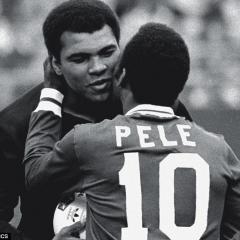 Latest Entry
Latest Entry
Retirement golf - 6 months result
It has been exactly 6 months after I retired. Here's what happened to my golf after I have retired.
- I have been playing 5 - 6 times a week. However, a simple majority of the rounds have been less than 18 holes. I simply quit when I get too tired, get hungry, etc.. Being able to play everyday, I don't feel I need to finish around.
- With more time, I thought I'd get warm up before a round but I don't. I feel I can learn more by playing. Instead, I go to range practice whenever I can't play a round - raining, course bought out, etc..
- I avoid playing during busy hours, like Saturday. That means I am playing a lot by myself or with my wife. This gives me time to focus more on each shot. When I play in 4-some, sometimes, I get distracted.
- My HI improved immediately after my retirement. Playing 5 - 6 times a week helped me improve on my short game, and course management. HI improved by about 4 - 5 strokes over the 6 months, not all at once though. However, I don't think it will continue to improve unless I do something different.
-
 Latest Entry
Latest Entry
The Day Golf Became Easier
Every golfer has the thought at some point..
"If only I could consistently shoot in the 70s, then I would enjoy golf more."
We get lost in our heads, dreaming of a fantasy where golf was one day an easy game.
What if we didn't have to worry about water hazards, sand, or OB?
What if 3-footers didn't bring us anxiety?
What if we could enjoy that pure strike that we long for on every single shot?
I'd argue that the better a golfer gets, the more enjoyable the game is.
But.. not in the way that most golfers imagine.
In this post, I will be examining our love affair with golf, how we can enjoy the failures that the game inevitably brings us, and why golf will never get easier (but can become more enjoyable).
Why Do We Love Golf?
What is fun about slicing a golf ball into the window of a house, or duffing a chip into the bunker?
If you're a bit more experienced, what is fun about making a triple bogey on the last hole to shoot 82?
Even at the highest levels, what is fun about missing a 5 footer to make the cut in a big tournament?
Golf is a game of heartbreak. For every great shot, there are five bad shots. You will fail by most standards 99% of the time. You might spend hours on the driving range, and perform worse the next day. If you hit one shot in the wrong place, your entire round could turn for the worse.
So why?? Someone explain to me why we love this game so much??
From another perspective, it does feel amazing to hit a pitch shot off tight turf, watch it bounce short of the hole, spin, and stop an inch from the cup.
It also feels rather pleasing to hit a low stinger down the middle of the fairway on a tight par 4.
Heck, it even feels great to make that dead straight 3-footer on the last hole to shoot 72!
In reality, our love affair with golf comes from something completely out of our control.
In pyschology, this external force is called "operant conditioning."
More specifically, as we practice golf, our behavior is being reinforced on a "variable-ratio" schedule of reinforcement. In psychological terms, this means that our behavior (hitting another golf ball) is reinforced after an unpredictable amount of responses (you never know when that "pure" strike is going to come). This reinforcement schedule is often noted as producing a high and steady rate of response (why you can't get yourself to stop hitting golf balls).
What you might not realize is that this type of operant conditioning is seen in one of the most addictive activities known to man...
Gambling.
Just like we pull the lever on the slot machine over and over, waiting for the symbols to line up, we also stand on the driving range, hitting ball after ball, waiting for that "pure strike" to happen.
In other words, we are literally addicted to golf.
Fortunately, golf is quite a productive and healthy behavior!
But like all addictions, it can take control of us sometimes, and we find ourselves wishing it was the other way around.
How can we improve our games to the point where golf doesn't take control of us? Wouldn't we enjoy it more if bad rounds and bad shots didn't bother us so much?
How to Love this Brutal Game
If you have read any number of golf books, business books, goal setting books, etc., then you understand what "the process" is.
I know how redundant it may sound, but "the process" is the key to enjoying this game AND being successful at it.
In our society, external outcomes are praised. We chase after these desires like mad men, and then when we finally achieve them, there is only a brief moment of satisfaction.
Golf is no different. Each and every one of us are striving for a better game, and often have a specific level that we would like to reach.
It might be breaking 90 for the first time, breaking 80 for the first time, or even winning a competitive tournament for the first time.
Unfortunately, in the midst of these desires, we find ourselves judging every single shot we hit, every single score we post, what others think of us, and even becoming self critical during practice.
In the end, where the ball lands, what score we shoot, and what our handicap becomes are not in our direct control. They are external to us.
They aren't part of the process, and therefore will not produce lasting satisfaction if we choose to focus on them.
The process is something more elusive, complex, and demanding.
So What is "The Process?"
In order to truly love golf and improve your game, you must dedicate yourself to a mindset that is common among elite performers.
And that mindset is one that doesn't fear failure.
It is a mindset that enjoys the process more than the results.
Finally, it is a mindset that falls in love with endless improvement
Notice that I did not mention anything about shooting good rounds of golf, winning tournaments, or beating your buddies on the weekend.
All of these things are out of your control, and will be products of an effective process.
Instead, you must focus on what you CAN control, and then TRUST that your preparation will produce the results that you so desire.
By adopting this care-free (not care-less) attitude, those bad shots, bad rounds, and negative thoughts won't seem so damaging.
Remember, the number on the scorecard is your compass. It tells you where you are pointing at the moment, but certainly does not require you to keep moving in that direction. If you shoot a high score, that simply means you have some thinking, learning, and practice to do.
Nothing else.
Making up an irrational story in your mind about your lack of skill as a golfer is a waste of time and mental energy. When you notice that you have started to think in a destructive way, simply bring yourself back into the moment, take a deep breath, and move on. Remember, golf is just a game.
If you can understand this concept, you WILL enjoy golf more, and you WILL improve.
Does Golf Ever Get Easier?
You might look at the pros on T.V., and think to yourself:
"If I could hit it like that, golf would be easy."
What you don't realize is that each of these professionals is grinding over every shot, whether you see it in their eyes or not. Sure, they are more confident off the tee than 99.9% of the world's golfers, but that doesn't mean that golf is "easy" for them. Just like your home course provides you with challenges, the USGA/R&A provides these tour pros with challenges such as long rough, lightning fast greens, and humiliating pin placements.
Rather than wishing golf to be easier, why not learn how to enjoy the challenge more?
As a golfer who has shot 64 all the way to 104, I have a general understanding of what each stage of the game feels like.
From my experience, if you focus on the process, and fall in love with continuous improvement, golf does become more enjoyable.
Think about it in terms of money. In the book "Happy Money" by Michael Norton and Elizabeth Dunn, the authors report that once the average household reaches a minimum threshold of income ($75,000 in the U.S.), they experience a greater satisfaction with life. As the household increases over this threshold, happiness no longer correlates with rising income.
For most people, golf is the same.
Once you reach a certain skill level (usually when you can break 90 consistently), golf does become more enjoyable. At this point, you are able to get off the tee, keep the ball in play, and make a few putts here and there.
Unfortunately, everything past this level becomes pure desire, and will inevitably bring a golfer frustration more often than not.
So what are you to do after passing this satisfactory level of skill? Are you doomed for the rest of your golf career?
Certainly not!
You are just going to have to focus less on results, and more on the things you can control.
Golf is enjoyable as long as you constantly seek ways to refine your process. Bad scores don't matter given you focus on improving your method of preparation and mindset rather than your score.
Sure, there will be brief times where you might feel the game slipping.
At these times, ask yourself what things you can control.
Focus on the process.
Be ambitious, yet detached from the results.
Do something every day to improve.
If you do these things, golf will remain the most difficult game known to man, but you will enjoy it.
What do you think? Why do YOU love golf?
-

 Latest Entry
Latest Entry
Golf Telecasts - Sensational or Stupid?
We learned this week that the Fox Network has severed ties with Greg Norman, who served as the network's lead analyst for their broadcast of the 2015 US Open. This news prompted me to think about golf broadcasting and sports broadcasting in general. I think it is time for a change. But before we get to that, I think it's a good idea to look at how much better sports and golf broadcasting is today, compared to how it was just a few short decades ago.
I grew up watching sports in the 1970s. Things were clearly different then. Some of the biggest differences between now and then are attributable to technology. There are more cameras now, so we see the action from many more vantage points than ever before, in all sports. The cameras are better...meaning we see clearer, sharper images, both in real time and in slow motion. Sound is much better. And of course the delivery system and the end-user view are radically changed; anyone who remembers adjusting an antenna or the "tuning" knob on and old TV knows that we are now spoiled with what are, in general, universally good, sharp, interference-free views of sporting events. The icing on the cake had to be large screen televisions, with sharp, colorful displays that we could only dream about when watching Jim McKay on "Wide World of Sports" or Keith Jackson do a college football game.
Golf broadcasts today are a visual treat. In the 1970s and 80s, and even to a degree in the 1990s, there were far fewer cameras covering the action. We can see action on all 18 holes, and mobile cameras give us close up shots of the lie of the ball, the golfer's perspective, his or her reactions to the shot, etc. Even the camera angles are better: at one time, the target-facing cameraman seemed to always position himself somewhat off to the side of the player, so that every shot looked like it was going dead right. Graphics are better, particularly overhead shots and flyovers where stats about the hole are given, lines are drawn indicating carry distances, etc. And let's not forget shot tracer, a technology that seems universally loved and adds an exciting element to watching a shot in real time.
Yet with all of these improvements, we still hear many, many complaints about golf broadcasting. Many of the complaints are sort of universal complaints that people might have about any live event coverage, i.e., too much advertising time, [insert announcer's name] has an irritating voice, or is stupid, etc. Here is a critique of CBS's coverage of the 2016 Honda Classic, replete with a laundry list of complaints big and small, many of them quite compelling. While it would be impossible to make everyone happy with respect to these sorts of complaints, I think there are ways in which golf coverage could be improved.
I think the main problem with golf broadcasting on the major US networks is simply that they talk and analyze too much. It is just the natural culmination of years of "improvements," such as more cameras, more on-course reporters, more tower commentators, more sound, etc. There is a point beyond which any pleasant thing starts to lose its appeal, or even become unpleasant. Like that 20th cigarette your Mom made you smoke when she discovered the pack in your pocket, or the 4th piece of pie you ate on Thanksgiving Day.
They simply talk too much. For any given shot, we might have non-stop talking, beginning with Johnny Miller or Jim Nantz in the 18th tower, to Koch's or Maltby's description of the lie, to a question by Miller about some aspect of the shot, to Maltby's answer, to the filling in of other information (club selection), to the conversation between player and caddie, continuing after the shot to an in-air description of the trajectory, followed by commentary and analysis of the result.
This happens over and over and over, and to me, it's lost it's appeal. In fact, I'm sick of it.
There are so many people, so many voices, that between the shot coverage, the comments on the players' personalities or outside lives, discussions of their swings, witticisms from the various court jesters (Feherty, McCord), the broadcast is a virtual verbal assault with almost no breathing room. They seem to enjoy hearing each other talk.
European Tour broadcasts - perhaps because of a more limited budget - are much more Spartan. An entire shot might be taken without any commentary whatsoever, except for maybe "he'll have that for par to remain on 7 under." The experience is refreshing.
To be clear, I'm not "venting" a dislike for any individual announcer (although I could...there are many who drive me crazy). I think that the overall broadcast formula has evolved into something which detracts from the viewing experience.
Part of the fun of watching sports is the excitement, not knowing what will happen next. When I watch sports, I'm always wondering to myself, what is the player thinking, what is he trying to do, what might he be coping with in this situation? To do this in silence as you watch can make the experience richer, more dramatic. When someone other than the player is constantly talking about these things, it takes your focus off the player, and your own, unique reaction to the experience.
Sometimes, less is more. It's true in so many areas of life. They need to understand this when they cover golf. It's ok not to talk. It's ok not to analyze a result. We don't need to hear why the shot went off poorly, or that you think it was the greatest shot you've ever seen. While all of these comments have their place and can have entertainment value, their extreme overuse has robbed them of almost any impact whatsoever.
Take the experience of an important putt. Typically, there is the "what's he got Roger, left edge? Yeah Johnny, I'd say it's inside left if anything, not much there. Yeah Roger but he needs to hit this because it's into the grain...." followed by "this is on a really good line.....!!!" etc. For me, it would be far more dramatic to cut to the putt as the player is in the last few seconds of his preparation, and have the announcer say "from 22 feet, for birdie to take the lead." Then, simply watch and listen. A good camera angle can add much the drama. And the latter is important, too: Great quality sound, catching as much of the gallery reaction, as the putt approaches the hole, as possible.
Some will say "then why don't you just mute your TV....I like the broadcasts the way they are." Fair enough...there is a workaround. But not really. Nobody wants silent broadcasts. Announcers and analysts are important. The issue is that I think the directors are placing too high a value on analysis, and are overusing it to the point of distraction.
To me, the modern golf viewer experience has been spoiled in a fashion similar to how I believe smartphones have spoiled experiences like graduations, childrens' plays and recitals, etc. Being able to record something on a smartphone is a powerful, seductive thing, and few of us can resist it. Yet, when doing it, I find myself coming away feeling as if I missed actually experiencing and feeling the event, because I was distracted by my role as filmmaker. Similarly, when we watch golf, our attention to the shots and the drama of the tournament is diluted by the talking, the analysis, and the descriptions. Yes, we need some descriptions, and yes, the broadcasts would become very boring if all they did was describe results. But I think a significant amount of this chatter could be eliminated and it would improve the experience tremendously.
I hope the TV networks will be willing to take a fresh look at their methods. It's not just a matter of finding the right person for the tower or a clever or funny on course commentator. It's about the golf, and the best way to deliver it to the viewer. I think they have some work to do and much room for improvement. What do you think?
-

- 8
entries - 62
comments - 6780
views
Recent Entries
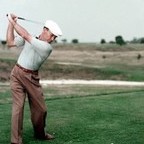 Latest Entry
Latest Entry
You Can't Buy a Lower Score
I was glad to have moved on from Dons craziness but my swing was still a mess. My wedges and short irons weren't horrible but I struggled with distance on clubs longer than a 7i. The season was close to over so I had stopped playing golf and was spending most of my time reading golf books and watching golf swing videos when I wasn't on the golf range trying to apply what I'd seen and read. I was also reading a lot of golf magazines and websites about new equipment. I read about how much more forgiving and longer new irons were and the importance of being "fit" for the clubs. I started thinking that maybe the problem wasn't my swing but the clubs so I went to Golfsmith to get fit for new irons. Based on my research I knew I wanted either the Titleist 712 AP1 or Mizuno JPX-825. I tested both along with the Nike Coverts at the urging of the salesperson. I decided I liked the JPX-825 best and got fit for them. I was hopeful that these new irons that were fit for me (interestingly fit for me meant standard out of the box with a regular shaft) would improve my golf game. The season was close to over so besides a few range sessions I never got to test the irons on the course.
Our accountant convinced my business partner and I to join his home golf club. It's a fairly exclusive club on Long Island and in addition to the cost I was a pretty concerned that I'd embarrass myself given the mess of my golf swing. We were offered a good deal to join and I'd have the winter to work on my golf swing so we went for it. I convinced myself and my wife since we were part of a country club I'd have to get some new clubs to replace my old driver and woods, a new golf bag and a new putter. Over the course of the winter I'd purchased a Titilest 910 driver and 3 wood, TaylorMade Rocketballz hybrid, Vokey SM4 wedges, a Scotty Cameron Newport 2 putter and Ogio Chamber bag. I spent close to $1200 but I had a nice bag of clubs, now I'd just have to play better.
I spent all winter looking at my new bag and reading about golf. I was looking forward to the new club and start of the golf season but it was delayed since we had a rough winter in NY that year. I did manage to get some range time in March and the new clubs weren't doing much for my game. I still struggled with distance on anything longer than a 7i, I sliced my driver and 3 wood but could hit the hybrid pretty well. The club was officially scheduled to open the course on April 10th, so we reserved a tee time and headed out there.
I was pretty nervous, new country club, new golf clubs and upon our arrival at the starters shed we were assigned a caddy. No one had mentioned that except for Tuesdays and Wednesdays members were required to use caddies. The last thing I wanted was someone from the club to watch me hack up their nice golf course. The caddy took our putters and headed out to the fairway while he waited for us to tee off. I was used to first tee jitters but this was worse than I'd ever experienced. The caddie was out in the fairway and other members were waiting for us to tee off. I could hear them making comments about my new shiny clubs and new golf bag and then realized that I was so nervous, I had grabbed my driver when I went to the tee box. I watched my business partner hit a nice drive right into the middle of the fairway and then it was my turn. I'm standing over the ball thinking to myself, you dumb ass why did you take your driver, you never hit your driver well. Of course with swing thoughts like that I hit a huge slice into the trees. They encouraged me to hit another but I knew it would be no better so I declined and rushed to my cart driving away as fast as the cart would move.
My nerves settled down a bit as the round progressed but overall I played poorly. I decided to show some mercy to our caddy and teed off with my 7i on the back 9 so he could take a break from hunting for my ball in the woods. I finished the round with a 105, certainly not my worst score but not what I was hoping for given all the money I spent of new clubs.
- 8
-

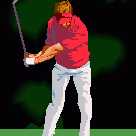 Latest Entry
Latest Entry
Review: SLDR Golf Irons
Note: This review was originally posted in June 2014. @saevel25 also reviewed the SLDRs.
@WUTiger 's review
TaylorMade SLDR Irons Review
June 21, 2014 By John P. Orr
Another TM club hits the market. Can the SLDR iron replace the R11 and hold its own in game-improvement land?
TaylorMade and parent company Adidas-AG have been in the news this spring, both for financial shortfalls and innovation. For finances, The Wall Street Journal reported on May 6 that Adidas had a 34% drop in first-quarter profits, which Adidas attributed in part to the sales downturn at TaylorMade.
For innovation, TM has put a steady stream of new club models on the market, including the SLDR family of a dozen driver models including the SLDR Mini Drivers – and assorted fairway woods. Also the Tour Preferred line of player’s irons has three flavors.
So, enter the SLDR irons. (In case you’re wondering, these irons contain no moving parts as do the SLDR drivers and fairway woods). The game-improvement SLDRs rank as successor to the popular R11 irons, falling between TM’s super game improvement Speedblades and player’s Tour Preferred trio of CB (cavity back); MC (muscle cavity); and MB (muscleback).
In the past, I played the TM Raylors, and had a season of RBZ fairway woods. For TM irons, however, this would be my first significant encounter. My current irons are game improvement X20 Tours - originally fitted with Project X - and recently reshafted with lighter NS Pro 8950 GH (regular). The NS Pros are in the same shaft band as the SLDR’s new KBS Tour C-Taper 90 shaft, which should set up some good comparison points.
The SLDRs have a sleek look, and sport a new C-Taper variant as the stock steel shaft. So, do the SLDR irons have what it takes to stand out in the TaylorMade club line, and game improvement land in general, or will these irons get lost in the product shuffle? Let’s see how they tested out for some clues.
Specifications
The SLDR model offers a 10-club arsenal, from 3 iron through SW. TaylorMade offers eight-club SLDR sets for $899, or $112 a club. I received the 4i – AW mix with a Regular shaft. Here are the overall specs:
Iron
Loft
Lie
Offset
Bounce
Length
SwingW
3
19°
60.5
4.9 mm
0.0
38.75”
D2
4
21°
61.0
4.4 mm
0.5
38.25”
D2
5
24°
61.5
3.9 mm
1.5
37.75”
D2
6
28°
62.0
3.4 mm
2.5
37.25”
D2
7
32°
62.5
3.0 mm
3.5
36.75”
D2
8
36°
63.0
2.6 mm
4.5
36.25”
D2
9
41°
63.5
2.3 mm
5.5
35.75”
D2
PW
46°
64.0
2.0 mm
7.0
35.50”
D2.5
AW
51°
64.0
1.6 mm
8.0
35.50”
D2.5
SW
56°
64.0
1.0 mm
8.0
35.25”
D4.5
Golfdom’s standard 3 iron measures at 39 inches long, and the SLDR shafts are a quarter-inch shorter than “average.”
Let's compare TM 7 irons : the SLDR has slightly more offset than the TP.CB (3.0 to 2.8 mm), but less bounce (3.5° to 4.5°). The SLDR’s lesser bounce may be compensated for by the extra camber - the rounded front-to-back arc on the sole – which would help the user-friendliness of the clubs.
Stock grips are the Golf Pride Tour Velvet. TM kindly fitted the irons with the Midsize grips I normally play. The Tour Velvets have a modest softness, and mesh with the glove hand well when I grip the club. The grips have a pleasingly solid, but not harsh, feel during the swing.
My set came with the stock steel shaft, the KBS Tour C-Taper 90 designed for TaylorMade. Stock graphite shafts include the SLDR by Fujukuri shafts, with 77 (X), the 67 (S) and the 57 (R) flexes. Custom steel shafts include other KBS at a $7 per club upcharge, three Project X for a $25 to $35 upcharge, three Dynamic Golf varieties and NS Pro 950 for $7 upcharges. Also, a Matrix Ozik 95-gram graphite is available.
The stepless C-Taper 90 blends the control of the C-Taper Lite with the higher launch of the KBS Tour 90. The table below shows the specs of these three taper-tip shafts:

KBS Tour Shaft
Flex
Weight (grams)
Trajectory
Torque
C-Taper Lite*
R
105
Mid-High
2.2
S
110
Mid
2.1
C-Taper 90 †
R
94
Mid
2.0
S
95
Mid
1.9
Tour 90*
R
95
High
2.5
S
102
Mid-High
2.3
* KBS website. // † TaylorMade Asian website
____________________
Note: Several weeks after writing this review, I got an e-mail from a TM tech rep concerning the C-Taper 90 shaft. He said the exact specifications were proprietary, but the shaft was similar in performance to the KBS Tour 90.
_____________________
Design and Technology
Like many in the game improvement category, these SLDRs offer a thin, flexing face and somewhat different design for longer irons compared to short irons. The thin face arrangement is backed by the Speed Pocket, pioneered in last year’s RocketBladez. The pocket, a hollow cavity that runs behind the clubface, allows the face to flex and deliver increased ball speed. This supersedes the Inverted Cone Technology used in the R11.
And, as with all TM iron models this year (except for MB), irons 3 through 7 have a polymer-filled ThruSlot that extends all the way through the back of the clubhead to the sole; it situates parallel to the Speed Pocket. This Thru-Slot promotes faster ball speed on the lower half of the clubface, where TaylorMade found 72% of golfers hit their shots.
SLDR irons 8 through SW omit the ThruSlot, which has diminishing benefits as lofts get higher. The Speed Pocket and ThruSlot also
function as part of the model’s vibration damping system, which helps with the club’s feel and sound.
The Speed Pocket and the ThruSlot, combined with the KBS Tour C-Taper 90 shaft, give the ball a very high launch. This high launch means the ball comes down steeply, helping it to stop on target. This is critical with irons fitted with low-spin shafts.
Designers produced a set which has loft differences of 3°, 4° and 5°, and half-inch shaft length increments through most of the set, until the 9 iron and wedges. Despite the unevenness, TaylorMade designers worked to tweak the faces and clubheads to ensure consistent distance differences up and down the set.
ThruSlot appears on irons 3 through 7 only.
Performance
I tested out the SLDRs at my golf club in a two-day trial. The first day I primarily hit them on the range, alternating with my current irons and comparing the two models. On full shots, the wedges were a bit short of my current ones, and short irons were about equal. In irons 4 through 7, however, the SLDRs started gaining yardage. The 4 iron was about a club longer than my current one.
The 4 iron pretty well matched my slightly longer-shafted 4 hybrid on distance, and on a couple of teed shots actually edged it with high, almost scary-straight shots. The hybrid was more reliable, but not as accurate. With the ensuing on-course performance, I would foresee this: If I’m playing twice a week, the 4 iron goes in the bag. If it’s twice a month, probably fall back to the hybrid.
For short game, the SLDRs showed well on chip and run shots. The ball came out low, checked once, and then released smoothly toward the hole. The 8 iron worked well if I had 25 feet or more to the cup; it came out hot, and was hard to control on shorter distances. The PW and AW, however, worked great for the shorter chips.
Also, SLDR has a solid approach wedge – gap wedge. I’m not normally a fan of stock iron set gap wedges, so the SLDR AW was a pleasant surprise. Gets the ball out of fluffy stuff well, and if opened up a degree pops almost like a lob wedge. The PW and AW gave me good line, but I’ll need to zero in the distances for partial wedge shots.
I had wanted to try the SLDR sand wedge at a local demo day. The SW only has 8 bounce, so I was curious about how it would perform. I couldn’t work it in, however, due to my volunteer shifts at the Curtis Cup, which the U.S. women amateurs won.
The next day I took the SLDRs out for a round. My tee shots were adventurous on several holes, so the SLDR irons got a varied workout. I hit the 8 iron into the par 3 No. 2, and for my approach on the following hole. Both shots landed pin high, but off the green to the left. On No. 3, I chipped with an 8 iron but ran it long, resulting in a bogie.
On No. 5, an uphill par 5, I hit a drive offline left into two-inch deep rough. I chose the 7 iron to try my escape, and hit a solid fade that stopped in the fairway at the top of the hill on one bounce. I then overclubbed on the approach, flew the green and ended up with a bogie.
The next hole, an elevated par 3 with a lake to the left, called for another 7 iron. I hit a shot long and left, which landed on the fringe and bounced into the lake. This being my third left miss, I did a check to see if my face alignment was perpendicular to the target line. When the club was square to the target line, it looked a degree open to me. So, I just need to retrain my eye and not slightly hood the club on set-up.
No. 9 saw the SLDRs shine. I pushed my drive into the medium rough, onto a ridge above a fairway bunker. With the ball above my feet, and 180 yards out, I expected a flier shot. But, the 5 iron went high and fairly straight, hit the false front of the green and spun back six feet into the fairway. From there, I had plenty of green to work with, and ran an 8 iron chip over a ridge and four feet below the hole. Sank the putt for a scrambling par.
The following hole I had an 8 iron into the wind, uphill from about 125 yards out. The shot hit the toe side, but carried up pin high into a greenside bunker. I came out of the bunker too strong, but picked an AW off the bank and rolled up 3 feet away, saving bogie.
The next was a short par 4 of about 300 yards. I teed off with a solid 4 iron draw, which left me 110 yards out. Since I was going into the wind, I hit a full PW. A nice high shot sailed 25 feet past the hole. Line was superb, but I was surprised I overcooked the shots going into a headwind.
A few holes later, I had laid up to 55 yards out on an uphill par 5. Laying three, I hit a half PW, normally 65 yards with my old clubs, but the ball bit about 15 feet short of the cup. I got an easy bogie, but could have been a par with better distance control.
No. 17 proved fruitful for the PW. I hit it into the short par 3, the ball landing 10 feet in front of pin and backing off the green. I then kept the PW and hit a short chip and run out of a swale, stopping it a foot to the left of the cup for a tap-in par. I just had to figure out when to chip with 8 iron vs. PW.
Overall, I had a pleasant first SLDR experience on course. It didn’t take long to get my basic setup – I like the low offset head design. And, the clubs will clear the ball out of the medium rough without having to muscle it – a benefit for those pursuing better swing tempo. Also, I actually overclubbed twice, a pleasant change of pace.
I especially like the 4 through 7 iron. Good distance, in part because rather strong lofts, but very reliable. As TM advertises, you don’t lose much distance if you hit it on the toe half of the clubface. It might not be on the green, but often will be pin high.
Esthetics
These irons have a distinctive look without glitz. Chrome head with satin clubface, black letter and number accents with a distinctive blue trim line on the back of the head, and black polymer inserts on sole and back of irons 3 through 7. A pleasant departure from the Halloween-orange trim that crept onto certain 2014 irons.
SLDR is kind of like a cross between a sports car and a fine scientific instrument. Some golfers will complain that chrome finish would keep them off the pro tour by reflecting too much sunlight into their eyes. I didnot find this a problem - the satiny clubface doesn’t reflect.
For golfers with topline angst, fear not! The topline is slightly narrower than comparable GI irons.
One attractive feature is the back of the clubs, which have a narrow rectangular tunnel slot rather than a deep cavern. This makes it less likely that grass and debris will get caught in the back of the clubhead after shots.
In addition, one feature which will protect the esthetics of the clubhead is the positioning of the Thru-Slot and polymers. These features are on the bottom half of the clubhead. So,if you need to fix a broken shaft, or decide to reshaft the SLDRs, you have less worry that the clubsmith will accidentally melt the polymers when heating the hosel to break the epoxy seal.
Conclusion
This club should appeal to a fairly wide range of golfers. I was able to hit quite a few decent shots on my first round with the SLDRs, and the club has enough forgiveness that players “on the cusp” of game improvement should try it. At the other end of golfdom, SLDR has one PGA Tour pro on board. D.A. Points put them in his bag on June 2, swapping out the custom Ping i5 irons he had played since 2010.
Reminds me of the Ping G15 from a couple of years back. A St. Louis golf pro told me he had fitted everyone from scratch golfers to 22 handicappers with the G15 – you just had to select the right shaft.
Basically, SLDRs fit what a competing company’s rep recommended for me: a game-improvement head with a lightweight shaft.
I will continue to play the SLDRs, and as I get used to them, recheck out the lie angle and shaft length. Any adjustments here could be made at regripping time.
The SLDR C-Taper 90 steel shaft is light, but not too light like the 85-gram steel shafts several companies inserted in irons starting in 2012. I proved wild with 85 gram shafts, and actually got a bit more distance with slightly heavier ones. A Golf Digest report explained the problem: average golfers can’t feel when they’re at the top with the 85s, and have trouble dropping them in the slot on the downswing. Low handicappers – most of whom don’t need the superlights - often get better results with 85s and such due to their their well grooved swings
What I like best about the SLDRs is the extra lift longer irons – 4 through 7 – with the ThruSlots. These play more reliably than most GI counterparts, and have less distance dispersion than my current irons. So, SLDR irons should serve the game improvement area well, and, with a variety of stock and custom shafts, likely attract golfers from other neighborhoods also. I expect SLDR to enhance the TM iron mix, and to hold its own against other company’s GI offerings.
-

- 2
entries - 21
comments - 7724
views
Recent Entries
 Latest Entry
Latest Entry
Night Time Is Supposed To Be My Time
I have come to be a big fan of sports on the other side of the globe. Or, basically, any sporting event that I can watch live at night. Starting at 7:30 pm is OK, but 8:30 or 9:30 is better. At these times, I end up really enjoying events that may otherwise not be on my sporting radar. The Australian (tennis) Open is the first that comes to mind. Sitting on the couch, bored, and flipping stations to see if Princess Bride or My Cousin Vinny is playing on one of the stations I pay entirely too much money for, only to accidentally stumble across live tennis, is an almost euphoric feeling - especially if Maria Sharapova or Eugenie Bouchard happens to be on the card. Just last year, I also got really into the stretch of Australian golf tournaments, as well as just about any European Tour event in Southeast Asia, in the winter. This also holds true for college football games being played in Hawaii (if they happen to have an interesting opponent - sorry Colorado State), the Tournament of Champions and Sony Open (also in Hawaii) in January, and, of course, most recently, the Presidents Cup in Korea.
In some cases there are two reasons for the added excitement. This is not true of the Presidents Cup, but for many of the others, I may have forgotten about it until the very moment that it's on. In which case, the feeling is not unlike the one you feel when you wake up dreading another grind, only to belatedly realize that it's Saturday! The other reason is the big one, and it is the main reason for this story; the kids have gone to bed. Let me repeat that last part: The. Kids. Have. Gone. To. Bed. Those of you that have kids know this beautiful silence very well. It is all too fleeting and it only occurs twice a day on weekdays, and once on the weekend. Every Monday through Friday morning there is the pleasant drive to work after dropping the last one off at school, and every day of the week, there is that moment that occurs sometime between 8 pm and 9:30 pm
 when you get to walk down the stairs, plop down on the couch, and take a deep breath that you can actually hear. No matter how tired you are at that point, there is no way you're going to go to bed and miss this! Let's see what's on?? YES!! The Presidents Cup is just starting to get good!
when you get to walk down the stairs, plop down on the couch, and take a deep breath that you can actually hear. No matter how tired you are at that point, there is no way you're going to go to bed and miss this! Let's see what's on?? YES!! The Presidents Cup is just starting to get good!Our kids are pretty good about sleeping through the night at this point (ages 6, 4, 10 mos) so the debacle of last Friday night came as a bit of a surprise. As the morning session foursomes were winding down, sometime between 11 and midnight I think, our daughter (the 4 year old) came into our room and announced that her bed is no longer comfortable for her, and proceeded to climb into ours. If she's tired and stationary, this isn't a problem, however, when she's restless and performing karate kicks on your back, this is very much a problem. So I took her back to her room and laid with her until she fell back asleep. Problem solved, for now.
Round 2 wasn't much later because, surprise daddy, the bed is still uncomfortable. This time our little guy decided to wake up as well, and my wife was soothing him ... also in our bed. Now there are four of us in there. It's a California king, sure, but come on people?!?! My daughter is, again, thrashing about but I'm "saved" from having to deal with this because the baby needs to be walked around. (I think we're somewhere in the 2 or 3 o clock hour at this point) The bright side is that Friday night was the night that they played two sessions in the Presidents Cup, so we went downstairs, drank some milk, and watched Spieth and Reed wrap up their fourball match in the dark to maintain the U.S.' slim one-point lead.
After I got him back in his bed I tried, briefly, to fit back into mine, only to find my daughter still doing cartwheels or spinning back kicks, or who knows what else. Well you know what young lady? Two can play at that game. You can have my 7' long bed with the down comforter and many many thread count sheets, and I will take the twin bed with the purple comforter, scattered Barbie Dolls and the Elsa themed pillowcase, thank you very much. Many might say she won, but for the last two hours of that night - I slept in peace. OK, that's a lie - 90 minutes later my older son realized I was in their room instead of his sister and so he came down and joined me in her bed for the last 30 or so minutes.
Luckily for me, like I mentioned, that is not an every day occurrence. Thankfully, it's rare enough that I deem it worthy to be written about. We were proactive and did make an attempt to fix the uncomfortable bed problem that day ... by switching out mattresses with her brother.
 He did make a comment the first night but none since, so I think it's worked.
He did make a comment the first night but none since, so I think it's worked.All parents probably have very similar versions of the same story, and the best part about it is there is always a happy ending. No matter how freaking annoying they can be at night, they are angels when they're asleep and everything is great again by morning. But those nights - ugh, those nights! As a parent, your world may revolve around your kids, but sometimes it's nice when there is an eclipse.
- 2






